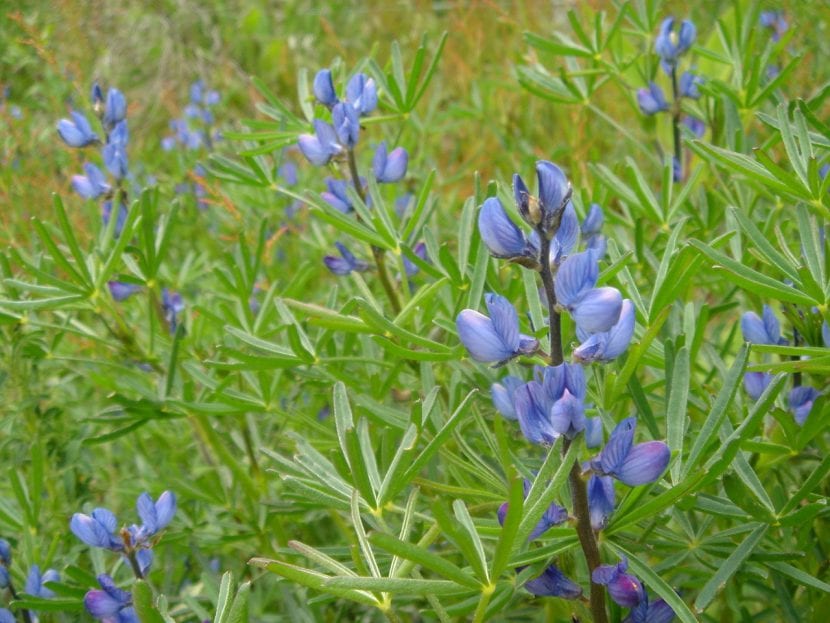
Image - Wikimedia / Ghislain118
Plants of the genus Lupinus are wonderful: easy to care for, resist cold ... and produce beautiful flowers. One of the most popular species is the Lupinus angustifolius, popularly known as blue lupine, a name given to it by the color of its petals.
So if you want to have a patio or garden with this herb and you would like to know what care it requires, write down the tips that we offer below 🙂.
Origin and characteristics of Lupinus angustifolius
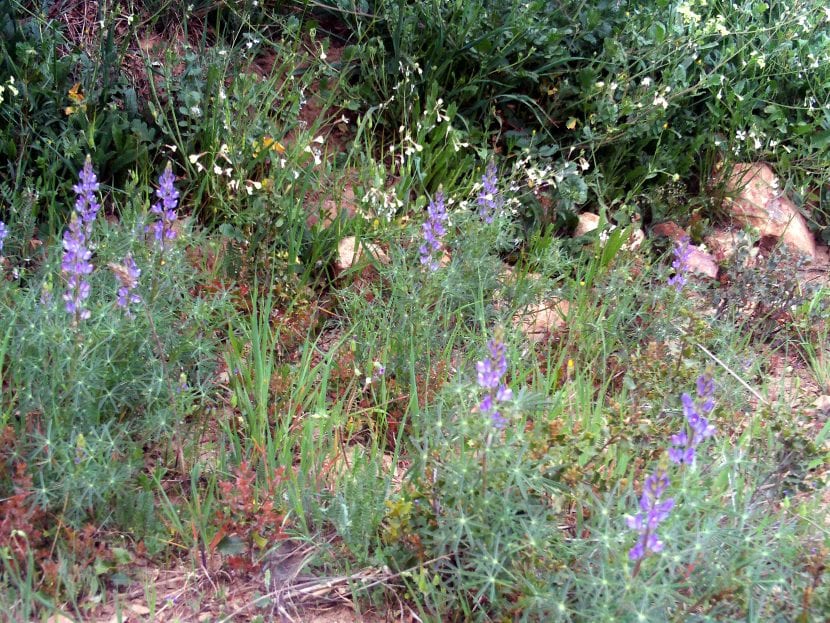
Known as alberjón, lizard bean or blue lupine, is an annual herbaceous plant (that is, it germinates, grows, flowers, bears fruit and finally dies in a matter of more or less a year) native to the Mediterranean region, although we will also find it in other parts of the world such as Australia or the United States as it is widely cultivated for its fruit. It belongs to the genus Lupinus.
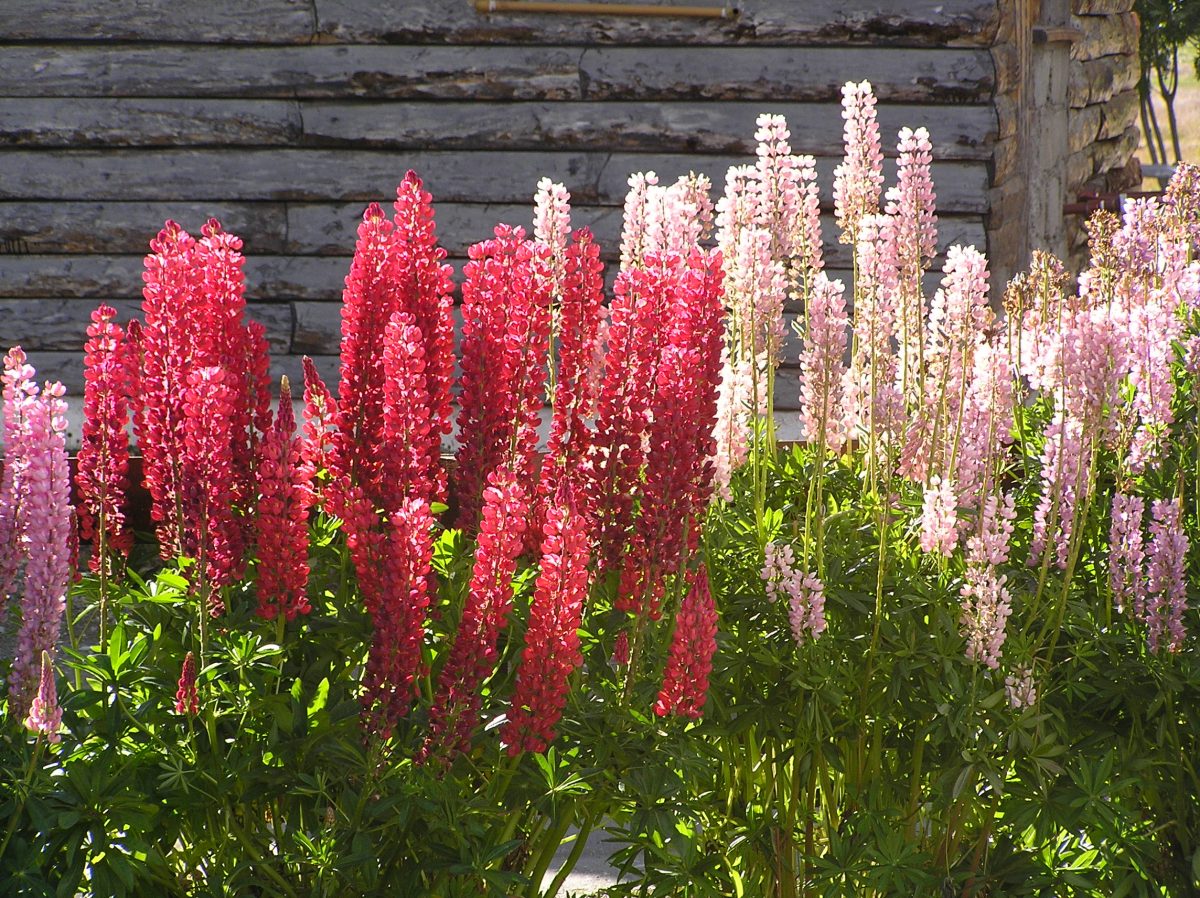
Reaches a height of up to one meter, and has pubescent stems from which alternate palmatic compound leaves sprout. The petioles, that is, the stems that join them to the rest of the plant, are 5 to 7 cm long. The leaves are divided into 5 to 9 leaflets with a linear-oblong or linear-spatulate shape, and have a glabrous upper surface and pubescent underside.
Blooms in spring and summer (from March to August in the northern hemisphere). The flowers are grouped in terminal racemes, measuring up to 20 centimeters, made up of about 30 bluish flowers. The fruit is a legume 4-7cm long by 1cm wide, yellow, brown or black and contains 3-5 rounded seeds.
What are their cares?
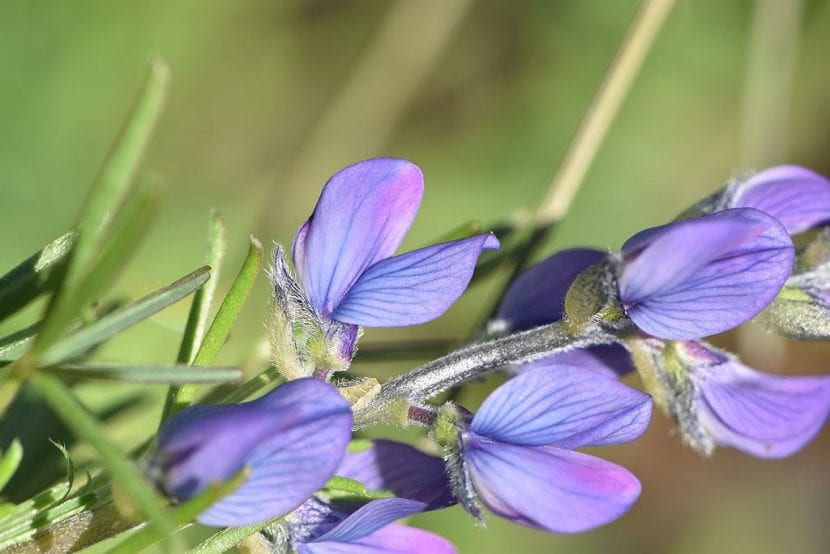
Image - Wikimedia / Lies Van Rompaey
If you are liking what you are reading about the blue lupine, then I will tell you how to take care of it:
Location
In its place of origin grows in full sun, and as in the Mediterranean its rays arrive with enough force, the temperatures during the summer become high (up to almost 40ºC). For this reason, it is an ideal species to have in the corners that are most exposed to the sun.
Although do not worry that if you have those holes filled, it will also grow well in semi-shade as long as it receives more light (a minimum of 5 hours) than shade.
Earth
- Flower pot: fill with mulch (for sale here) mixed with 30% perlite (for sale here).
- Garden: prefers soils with neutral or acid pH, with sandy or loamy texture.
Irrigation
Frequent. He Lupinus angustifolius You need the soil or substrate, depending on where it is grown, to be moist. But we must avoid waterlogging, so taking this into account, and in order not to lose it ahead of time, we advise checking the humidity before watering, either with a wooden stick, a digital meter, or weighing the pot once watered and again after a few days.
Yes, it is important to use rainwater, suitable for human consumption, or acidic (pH between 4 and 6). If it is watered with calcareous water, the leaves will turn yellow due to the lack of iron; that is, they will have iron chlorosis. If this is the case, you must provide iron chelate (for sale here), but you have to know that those yellowish leaves will end up falling.
Subscriber
From early spring to late summer with fertilizers like guano in liquid form (for sale here). But if you are not going to use it other than as an ornamental plant, it is highly recommended to fertilize it with a specific fertilizer for acidophilic plants (for sale here) following the instructions specified on the package.
Multiplication
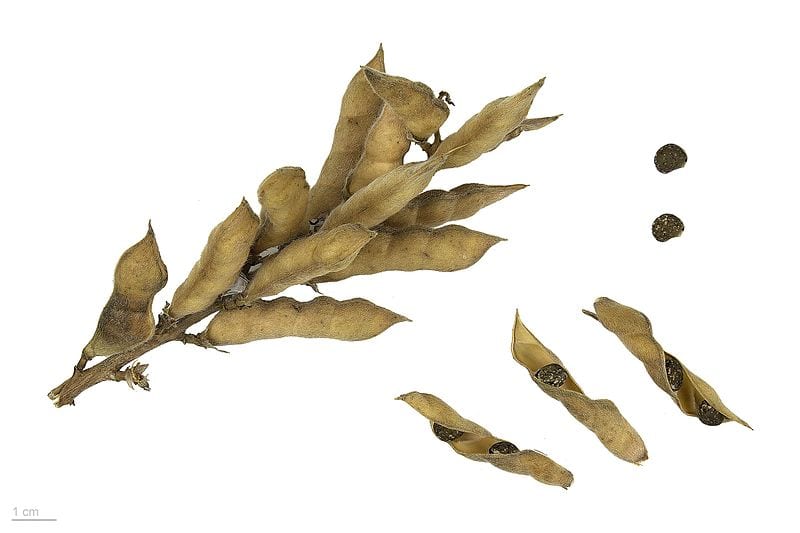
Image - Wikimedia / Roger Culos
El Lupinus angustifolius multiplies by seeds in spring following this step by step:
- First, put the seeds in water for 24 hours.
- The next day, fill a pot with substrate for seedlings (for sale here).
- Then, place the seeds that have sunk on the surface of the substrate, trying not to put more than 2-3 in each pot.
- Then cover them with a thin layer of substrate.
- Finally, water and place the pot outside, in full sun.
Keeping the substrate moist they will germinate in about 15 days.
Planting or transplanting time
Since he only lives one year, should be planted in the garden in early spring. In the event that you have obtained it from seed, you can transfer it to a larger pot as soon as the roots come out through the drainage holes of the 'old' pot, or when you see that it has stopped growing due to lack of space.
Rusticity
Resists cold, but not frost. However, extreme heat (about 40ºC) does not affect you if you have water at your disposal.
What uses is it given?
Ornamental
It is a very beautiful plant, which it looks spectacular both in pot and in the garden. As we have seen, its care is not very complicated, so it will not be difficult for you to enjoy it a lot 😉.
Edible
The fruits are eaten as an aperitif. They are rich in protein, vitamins, and fiber. Its nutritional value per 100 grams are:
- Calories: 496kcal
- Proteins: 15.6g
- Fat: 2,9g
- Carbohydrates: 9,9g
- Glycemic index: 15
Medicinal
The seeds have purifying, diuretic, vermifuge, emmenagogue, pectoral and nutritional properties. What's more, the roots are digestive.
Including them in the diet is an excellent idea, since they help reduce cholesterol, regulate blood sugar levels, promote intestinal transit, avoiding and / or treating constipation due to their fiber content, and if that were not enough, too they will stimulate cell renewal.
Where to buy Lupinus angustifolius?
You can get seeds at nurseries, garden stores, or here:
No products found.